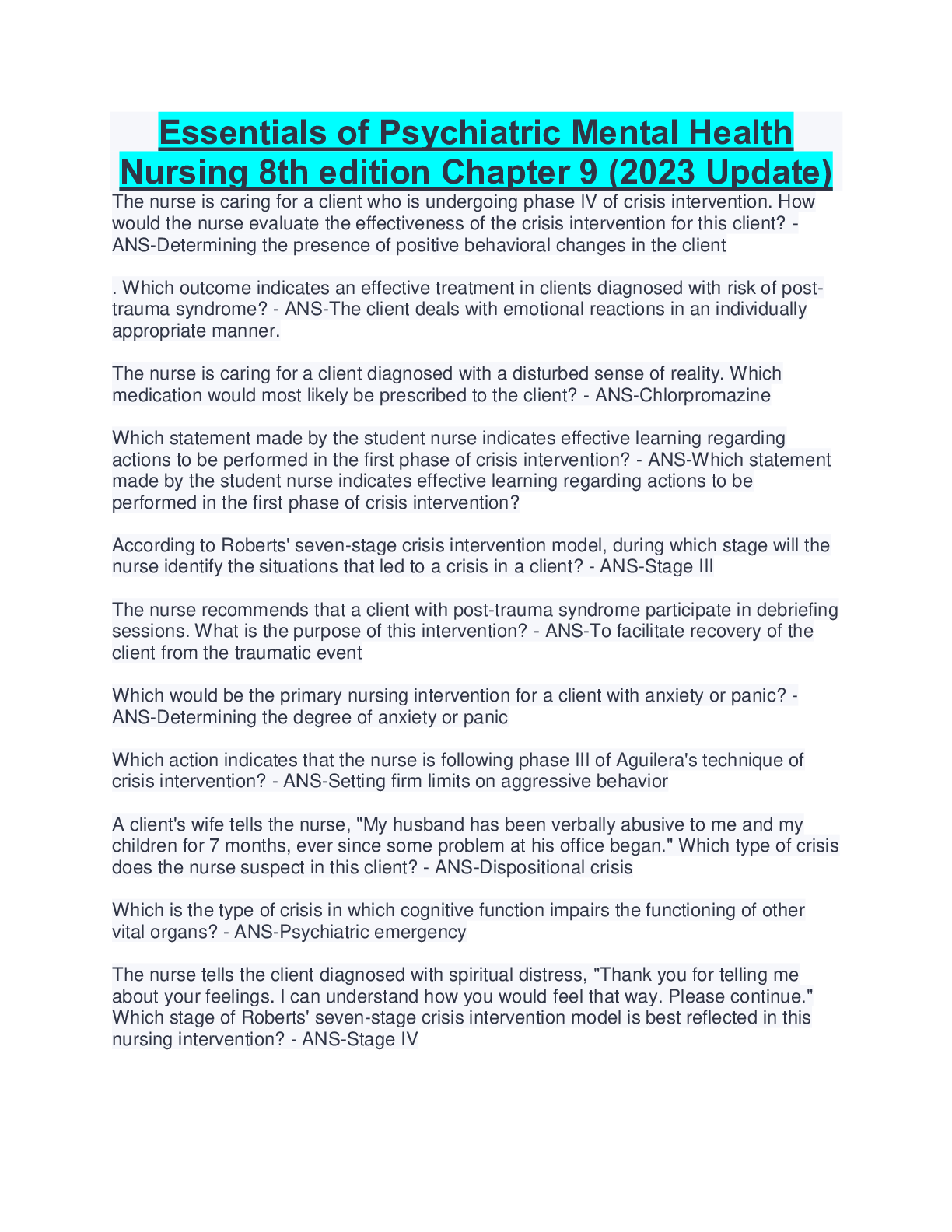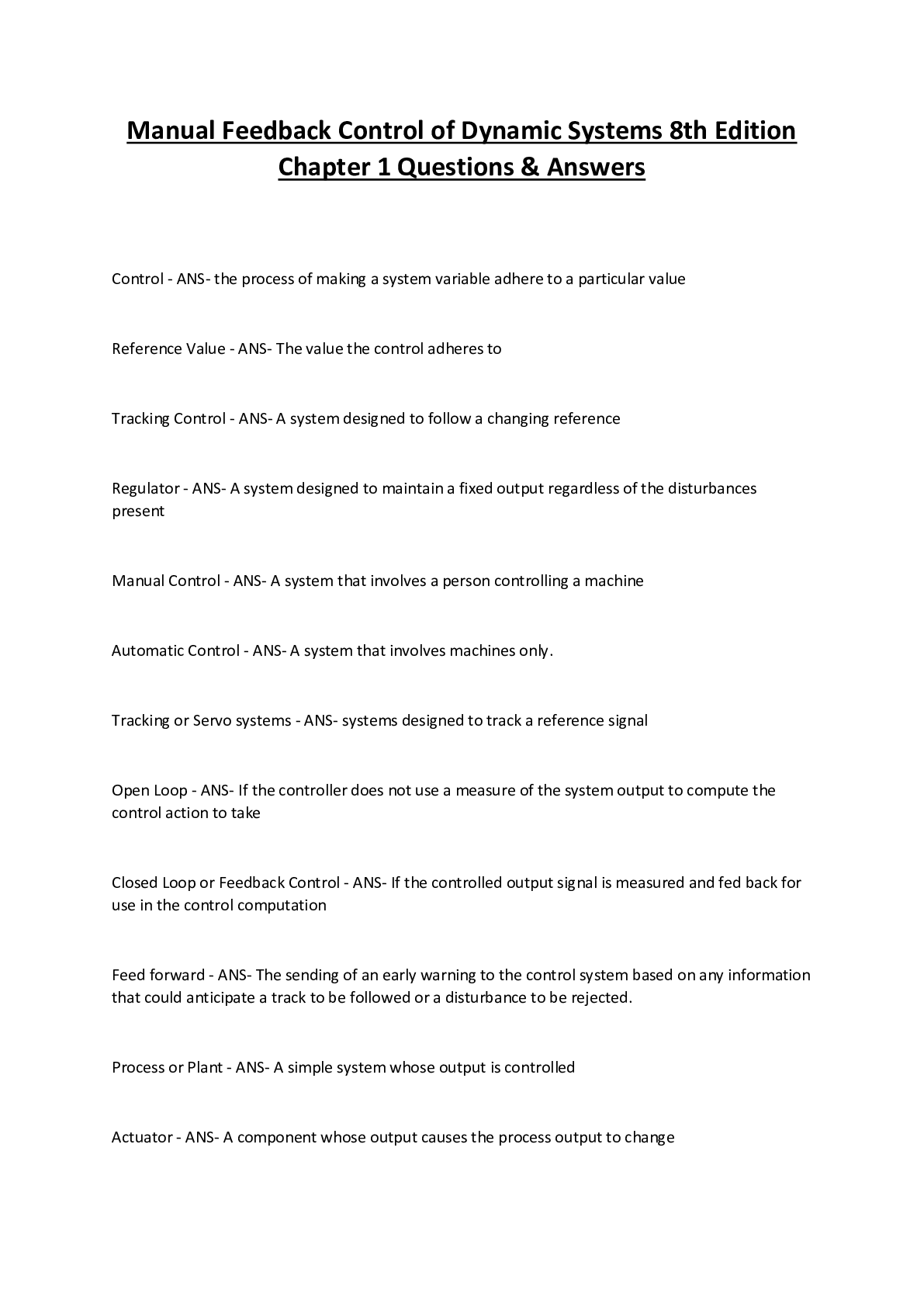*NURSING > QUESTIONS & ANSWERS > Clinical Nursing Skills & Techniques, 8th Edition Chapter 6: Health Assessment (All)
Clinical Nursing Skills & Techniques, 8th Edition Chapter 6: Health Assessment
Document Content and Description Below
Perry: Clinical Nursing Skills & Techniques, 8th Edition Chapter 6: Health Assessment Test Bank MULTIPLE CHOICE 1. The nurse is visiting the patient for the first time this shift. She introduces h... erself and asks the patient several questions related to his condition. While doing so, and without being obvious, she is looking at the color of his eyes and is assessing his ears and nose for discharge and the symmetry of his mouth. The nurse is using the assessment technique known as: a. Palpation b. Percussion c. Inspection d. Auscultation Inspection is the visual examination of body parts or areas. An experienced nurse learns to make multiple observations, almost simultaneously, while becoming very perceptive of abnormalities. Palpation uses the sense of touch. Percussion involves tapping the body with the fingertips to evaluate the size, borders, and consistency of body organs and to discover fluid in body cavities. Auscultation is listening with a stethoscope to sounds produced by the body. DIF: Cognitive Level: Application REF: Text Reference: Page 108 OBJ: Describe the techniques used with each assessment skill. TOP: Inspection KEY: Nursing Process Step: Implementation MSC: NCLEX: Physiological Integrity 2. The patient is admitted with fever and acute lower abdominal pain. He has taken Tylenol but says he still feels feverish. Before taking the patient’s temperature, the nurse may: a. Touch the patient’s skin with the dorsum of her hand b. Touch the patient’s skin with the pads of her fingers c. Palpate the skin using the bimanual method d. Tap the patient’s skin using the fingertips The dorsum (back) of the hand is more sensitive to temperature variations. USTESTBANK.COM The pads of the fingertips detect subtle changes in texture, shape, size, consistency, and pulsation of body parts. Bimanual palpation involves one hand placed over the other while pressure is applied. The upper hand exerts downward pressure as the other hand feels the subtle characteristics of underlying organs and masses. Seek the assistance of a qualified instructor before attempting deep palpation. Percussion involves tapping the body with the fingertips to evaluate the size, borders, and consistency of body organs and to discover fluid in body cavities. DIF: Cognitive Level: Application REF: Text Reference: Page 109 OBJ: Describe the techniques used with each assessment skill. TOP: Palpation KEY: Nursing Process Step: Implementation MSC: NCLEX: Physiological Integrity 3. The assessment technique that involves striking the body surface directly with one of two fingers is known as: a. Indirect percussion b. Deep palpation c. Direct percussion d. Light palpation Two methods of percussion are direct and indirect. The direct method involves striking the body surface directly with one or two fingers. Perform the indirect technique by placing the middle finger of your nondominant hand firmly against the body surface. With palm and fingers remaining off the skin, the tip of the middle finger of the dominant hand strikes the base of the distal joint of the finger. After light palpation, use deeper palpation to examine the condition of organs. Depress the area you are examining by approximately 2 cm (1 inch). For light palpation, apply pressure slowly, gently, and deliberately, depressing about 1 cm (½ inch). DIF: Cognitive Level: Application REF: Text Reference: Page 111 OBJ: Describe the techniques used with each assessment skill. TOP: Percussion KEY: Nursing Process Step: Implementation MSC: NCLEX: Physiological Integrity 4. When preparing to complete an assessment for a 16-year-old patient, a nurse should: a. Focus on illness behaviors b. Plan for a diminished energy level c. Treat the patient as an individual d. Have the parents present throughout Older children and adolescents tend to respond best when treated as adults and individuals and often can provide details about their health history and severity of symptoms [Show More]
Last updated: 2 years ago
Preview 1 out of 22 pages
.png)
Buy this document to get the full access instantly
Instant Download Access after purchase
Buy NowInstant download
We Accept:

Reviews( 0 )
$7.00
Can't find what you want? Try our AI powered Search
Document information
Connected school, study & course
About the document
Uploaded On
Jun 05, 2021
Number of pages
22
Written in
Additional information
This document has been written for:
Uploaded
Jun 05, 2021
Downloads
0
Views
133


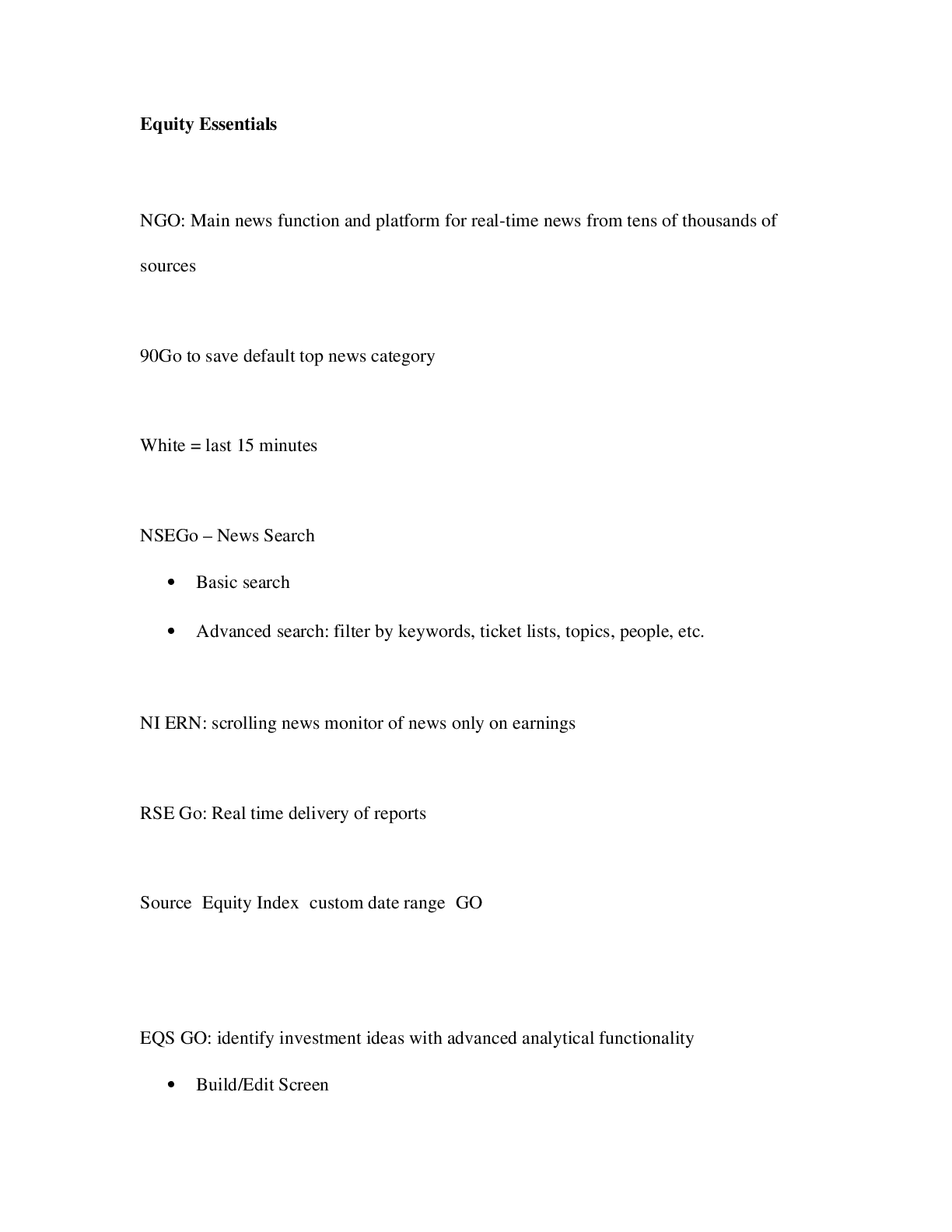

.png)



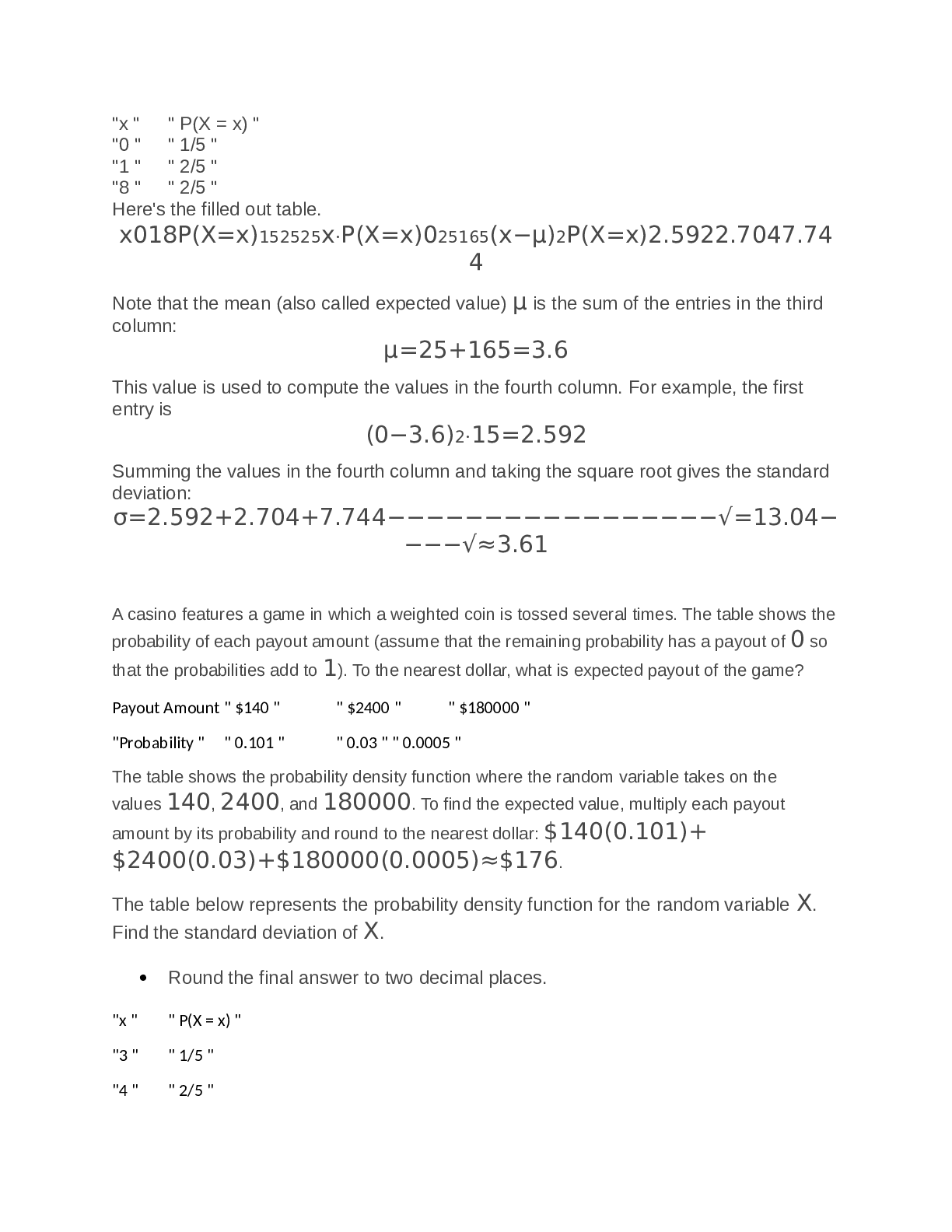
.png)

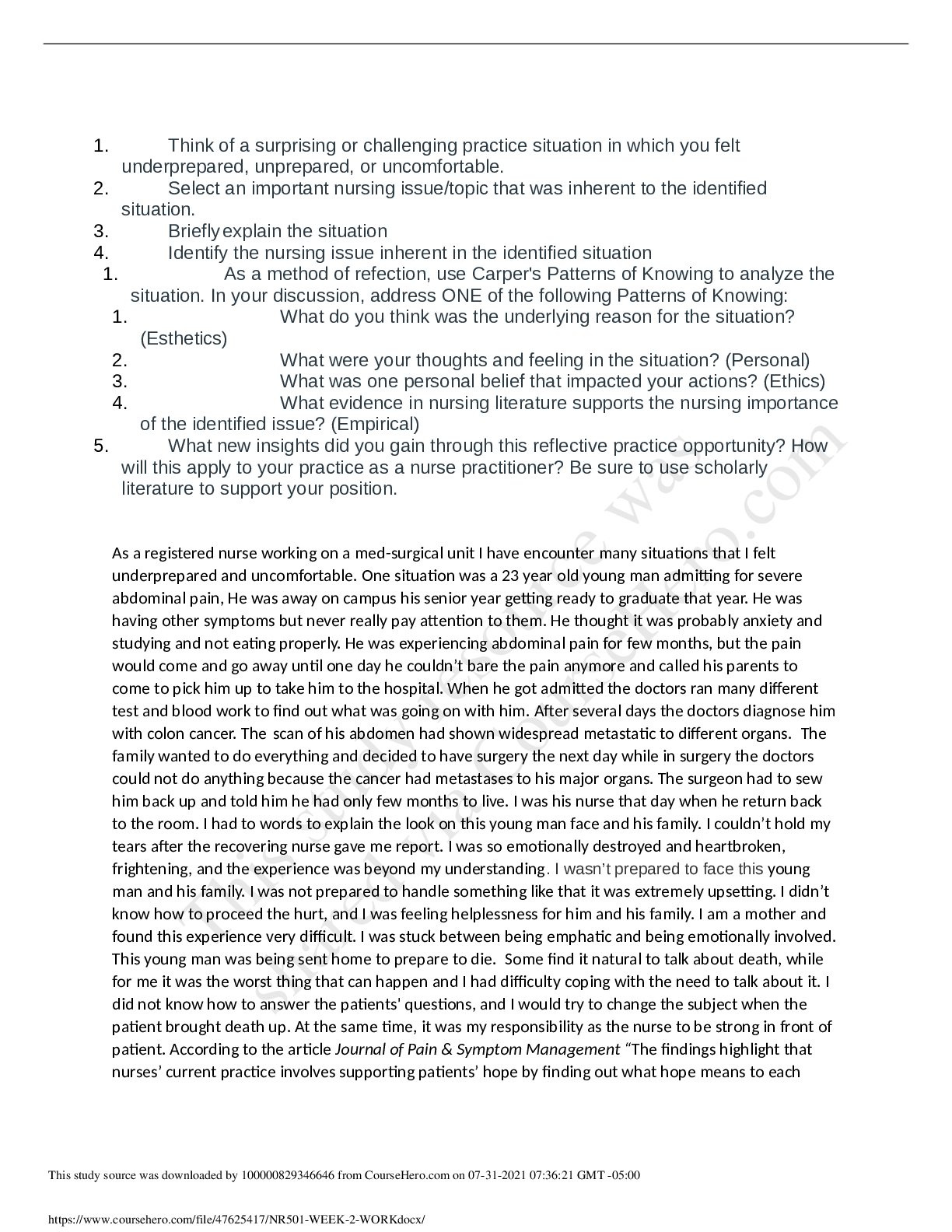

.png)

_compressed.png)
 (1).png)


